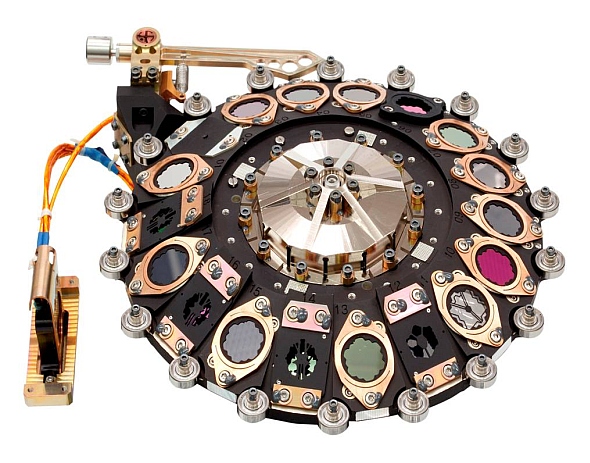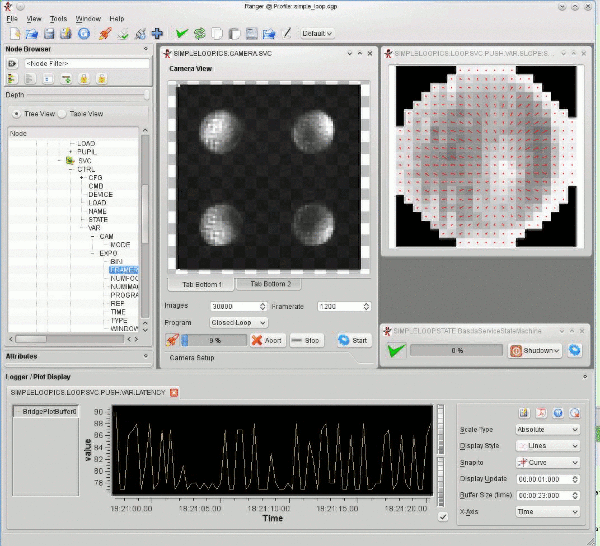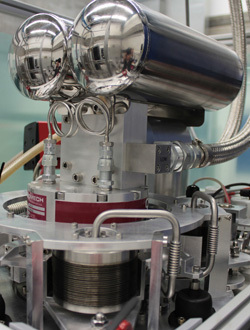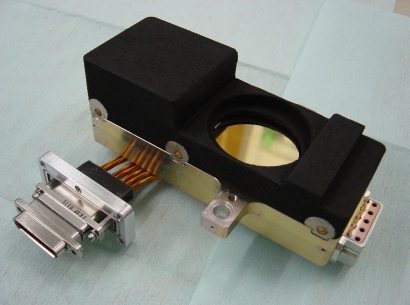| Version 352 (modified by , 6 years ago) (diff) |
|---|
The AstroTechTalk (ger) offers a place to discuss, for all interested colleagues and especially for the technical departments, the project leaders, the administration and the scientists as the ultimately users:
- status of instrumentation projects
- scientific tasks and features of the instruments in construction or planned
- new possible involvements
- technical innovations and developments
- technical problems and their solutions
- logistical problems and their solutions
- how to improve operation and observation
- project standards.
Time: Always Fridays 11:00 - 12:00 (during the construction work: 10:00 - 11:00)
Location: MPIA Hörsaal (during the construction work: HdA Auditorium)
Outline:
- Announcements (news, visitors, etc.) (mainly in German)
- Talk of about 30 min about a selected topic (German or English, will be announced)
- Follow up discussion and questions (German or English, depending on the speaker)
Proposals for talks: Please send an email to "hofferbert -at- mpia.de" or "naranjo -at- mpia.de" - alternatively you might reach us by phone (06221-528209 or -290) or in person (room 211 or 018) at MPIA.
| Date | Speaker | Topic |
| 02.02.2018 (10hrs, HdA) | Joachim Wolf (KIT-ETP) | KATRIN - the "Karlsruhe Tritium Neutrino Experiment" Apart from photons, neutrinos are the most abundant particles in the universe. Therefore even the small neutrino mass has an impact on the evolution of the visible universe. And also in particle physics the neutrino mass is an important parameter. The observation of neutrino oscillations confirmed for the very first time that neutrinos have a mass. But, those experiments only allow to measure the difference of squared mass values of the different neutrino generations, i.e. absolute mass values cannot be deduced. A model independent method to determine the neutrino mass is the precise measurement of the beta spectrum of a radioactive decay. Goal of the KATRIN experiment, which is currently commissioned at the "Karlsruher Institut für Technologie" (KIT), is the determination of the neutrino mass, more specifically, the effective mass of electron anti-neutrinos in the decay of molecular tritium gas. A finite neutrino mass would lead to a tiny change in the form of the beta spectrum at its kinematic endpoint of 18,6 keV, which has to be measured with high precision. Since only about 2 x 10-13 of all beta electrons possess an energy in the last eV below this endpoint, the source requires a high intensity. With a sensitivity of mn = 0.2 eV/c2, KATRIN will improve all previous limits of tritium measurements by a factor of 10. The complete setup of the KATRIN experiment has a total length of 70 m and can be divided into two main areas: In the source and transport range the tritium decay is happening (~1011 Bq), the electrons are guided to the spectrometer range using super conducting magnets and the remaining tritium gas is pumped with such a high efficiency that only a fraction of less than 10-14 of the original amount of gas reaches the spectrometer. Finally, in this spectrometer and detector area the energy of the electrons is measured with highest precision. This happens in the main spectrometer with 10m of diameter and 23m of length, comprising an ultra-high vacuum of 10-11 mbar in a volume of 1240 m3. For the energy measurement the so-called MAC-E filter technique is applied using an electrostatic high-pass filter, which only allows electrons above a certain voltage threshold to reach the detector, and finally getting counted. The talk explains the measurement of the neutrino mass and the KATRIN experiment and discusses the technological and physical challenges. Presentation: German Slides: English Questions: German, English |
| 09.02.2018 (10hrs, HdA) | ||
| 16.02.2018 (10hrs, HdA) | Robert Harris (ZAH-LSW) | Astrophotonics The field of Astrophotonics bridges the gap between the small mass-produced devices manufactured for the telecommunications industry and large one-off astronomical instruments. In this talk Robert Harris will summarise the developments in the field, the technologies that made this possible and some of the successes. He will examine where these technologies could be of use and some of the future devices which could be manufactured. Presentation: German Slides: English Questions: German, English |
| 23.02.2018 (10hrs, HdA) | Ernest A. Michael (RAIG, University of Chile) | Fiber-based Heterodyne Infrared Interferometer: Towards a small proof-of-principle Prototype at 1.55 µm Ernest Michael presents the concept for a comparatively inexpensive near-infrared heterodyne interferometer based on commercial 1.55µm fiber components. First lab results were obtained for the telescope to single-mode fiber coupling control, LO phase-stabilization between both telescopes, and the heterodyne correlation receiver system. He also discusses the applicability of this concept for long-baseline, high telescope number systems and mid-infrared wavelengths. Presentation: German Slides: English Questions: German, English |
| 02.03.2018 (10hrs, HdA) | Gabriele Rodeghiero | Preliminary Design of the MICADO Calibration Assembly This presentation will survey the preliminary design of the MICADO Calibration Assembly (MCA). MICADO is targeted to be one of the first light instruments of the Extremely Large Telescope (ELT) and it will embrace imaging, spectroscopic and astrometric capabilities including their calibration. The astrometric requirements are particularly ambitious aiming for 50 µas differential precision within a single epoch. After a complete overview of the MCA subsystems, their functionalities, design and status, particular emphasis will be placed on the ongoing efforts (both prototype testing and simulation) on the astrometric calibration of the optical distortions of the instrument and the telescope. Presentation: English Slides: English Questions: German, English |
| 09.03.2018 (11hrs, MPIA Hoersaal) | Joerg Wagner (ISD, University of Stuttgart) | J.G.F. Bohnenberger: Astronomer, Geodesist and Inventor of the Gyroscope Johann Gottlieb Friedrich Bohnenberger (1765-1831) was a professor of physics, mathematics, and astronomy at the University of Tuebingen, the scientific head surveying officer of the early Kingdom of Wuerttemberg, and an important German astronomer of the 19th century. He made both major contributions to introducing modern geodesy in Germany and invented various physical instruments. The "Machine of Bohnenberger" is considered the first gyro with cardanic suspension and forms the precursor of Foucault’s Gyroscope of 1852. This presentation discusses this apparatus as well as the life and the scientific work of J.G.F. Bohnenberger. Presentation: German Slides: English Questions: German, English |
| 16.03.2018 (11hrs, MPIA Hoersaal) | Klaus Meisenheimer | MATISSE — its Way to "First Light" and Beyond MATISSE is the next MIR instrument for ESO's VLT Interferometer. Seven European institutes are cooperating in this project since 2011. After the integration of the Dutch "cold optics" in the cryostats at MPIA and the delivery to OCA Nice end of 2014, MATISSE made a rather laborious rise to its Preliminary Acceptance Europe (PAE) in September 2017. After the arrival on Paranal end of October the integration and commissioning went smoothly and culminated in the coherent 4-telescope-observation of Sirius on February 19th. Klaus Meisenheimer will explain functionality and major advantages of MATISSE and he will recapitulate the developements up to "First Light". An outlook will highlight the fascinating scientific possibilities for MPIA and its partners from 2019 on. Presentation: German Slides: English Questions: German, English |
| 23.03.2018 (10hrs, HdA) | Peter Bizenberger | The ELT METIS Imager MPIA is involved in the METIS project for the ELT. Two main work packages are under responsibility of our institute, the adaptive optics control and the imager. In this presentation, Peter Bizenberger introduces the imager: the functionality, the role within METIS, but also how we design, built and test this part of the instrument. Beside presenting the instrumental side, i.e. designing an instrument for the ELT, he will also highlight how this task is achieved within a European consortium. Here also the managerial side is addressed. Presentation: German Slides: English Questions: German, English |
| 30.03.2018 | -- | Good Friday |
| 06.04.2018 | -- | Easter break |
| 13.04.2018 | ||
| 20.04.2018 (10:30hrs, Seminarroom) | Peter Bizenberger | Slide-Show: Life at LBT - how it actually is A few impressions about the work and the daily routine at the LBT. How to get there, what you can do and what you are supposed to do, how it looks there and all around. Many pictures, but no instruments and no astronomy, only the day-to-day survival. Presented basically for those, who haven't made the experience yet, and to describe how a business trip to LBT typically looks like. And certainly for those, who know it and enjoyed it already. Lots of photos - no text Language: German |
Preview:
TBD - Name: Title
Postview:
Presentations from 12.09. - 31.12.2014
Presentations from 01.01. - 31.07.2015
Presentations from 01.08. - 31.12.2015
Presentations from 01.01. - 31.07.2016
Presentations from 01.08. - 31.12.2016
Presentations from 01.01. - 31.07.2017
Attachments (11)
- instrum8_gr.jpg (82.6 KB) - added by 10 years ago.
- instrum4_gr.jpg (104.4 KB) - added by 10 years ago.
- pedv3_gr.jpg (213.9 KB) - added by 10 years ago.
- alfa3.5.gif (235.6 KB) - added by 10 years ago.
- CIAO.jpg (3.8 MB) - added by 8 years ago.
- linc_nirvana_labor.jpg (255.2 KB) - added by 8 years ago.
- MATISSE.jpg (43.1 KB) - added by 8 years ago.
- miri_fm_filterwheel.jpg (145.6 KB) - added by 8 years ago.
- PACS-Chopper.jpg (80.0 KB) - added by 8 years ago.
- simple_loop.gif (965.4 KB) - added by 8 years ago.
- teaser.jpg (13.5 KB) - added by 8 years ago.
Download all attachments as: .zip







